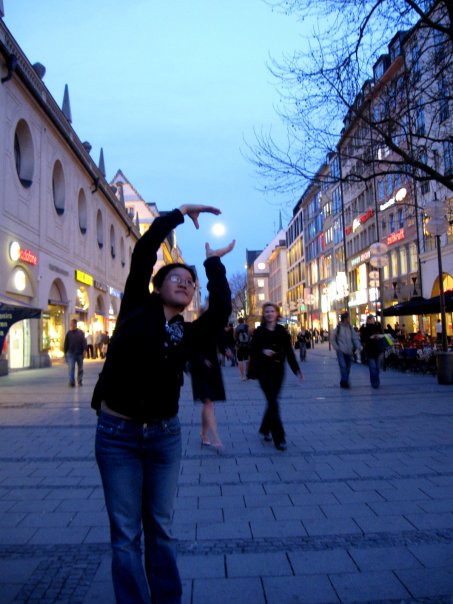How's chinese math different? I'm very curious...
There are many ways in the past in which I've tried math in both the methods taught to me by teachers in school, and the way they were taught to me by my family at home. The latter, I must say, was almost always faster or more efficient.
Let's take the multiplication table as one example. Children in America are taught to memorize:
| Mult. Fact | Spoken Translation |
| 4 x 7 = 28 | "Four times seven is twenty-eight" |
| 4 x 8 = 32 | "Four times eight is thirty-two" |
| 4 x 9 = 36 | "Four times nine is thirty-six" |
Anyone who is an English native-speaker can speak up if you learned your multiplication tables differently.
Children in China are taught to memorize:
(Note: It also literally takes less time to speak any Chinese number than its English counterpart. At least in my opinion.)
| Mult. Fact | Spoken Translation |
| 4 x 7 = 28 | "Four seven twenty-eight" si-qi-ershiba |
| 4 x 8 = 32 | "Four eight twenty-four" si-ba-sanshisi |
| 4 x 9 = 36 | "Four nine thirty-six" si-jiu-sanshiliu |
Fun fact: Shanghainese syllables are usually even shorter than Mandarin Chinese ones ;) .
Funner fact: All of the multiplication facts that have single-digit answers in Chinese are so short that the syllable "de" is added after the first two numbers as a placement "equals to" syllable, so as to remain consistent with the rhythm of the rest of the chart.
As for that, this form of memorization is designed to be very rhythmic and can almost be chanted. Considering the correlation between music and memory, I'd say that turns out to be a useful factor.
Let's take item counting now.
From personal observation alone, I generally see more people in Western countries who, when faced with a large number of the same item (basket of apples, dinner table of people, etc.), typically tend to point to every object individually and count by ones.
From personal observation alone, when I watched members of my family counting heads at a family reunion or whether there were enough leaf-wrapped rice cakes in the giant steamer to go around, everything was always counted by either 2's, 3's or even 4's. Often that involves pointing not with one finger, but with 2, 3 or the whole hand at once. That sounds confusing if you've never done that, but it comes remarkably naturally when you've done it since you were a child. When it comes to a mass of objects, it's illogical and completely inefficient to count by ones.
Even when it comes to small things in masses, where it becomes hard to eyeball groups, I instinctively separate them out by groups of 3's, and 4's if I can manage.
(Is this a really beautiful picture of M&M's or what?)
In addition, there are countless (haha) other methods regarding both basic and advanced math where the Chinese form is simply more... efficient. I always got some feeling like Western math was more based on rules in which one could come to a type of answer, whereas Asian math seems to assume more often that each kind of solution will naturally require its own fastest method, and therefore, it's stupid to try and waste time applying one thing's method to another, regardless of how fast it works in its natural element.
Anyone who speaks English at all can speak up if all that made no sense.

2 comments:
I started seriously group-counting when I realized it was the only way to count moving things. I suspect anyone that works with herds of pigs, sheep, cats, or children probably does the same.
Yeah, I imagine that makes a lot of sense, and I remember that it was always especially useful for things that don't stay put, now that you mention it.
Post a Comment